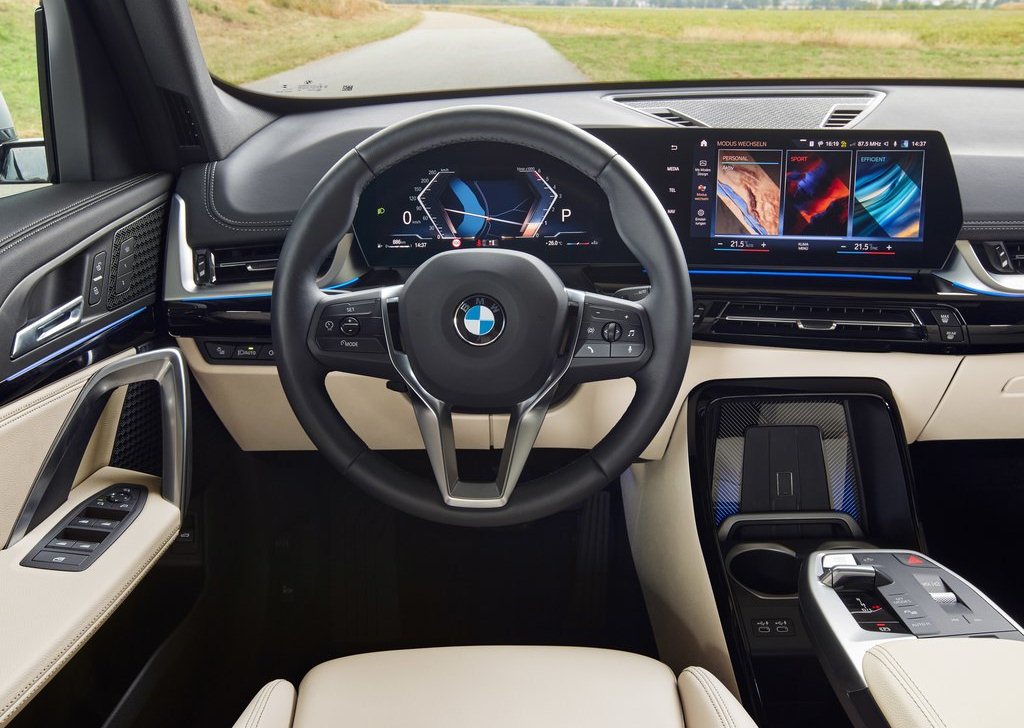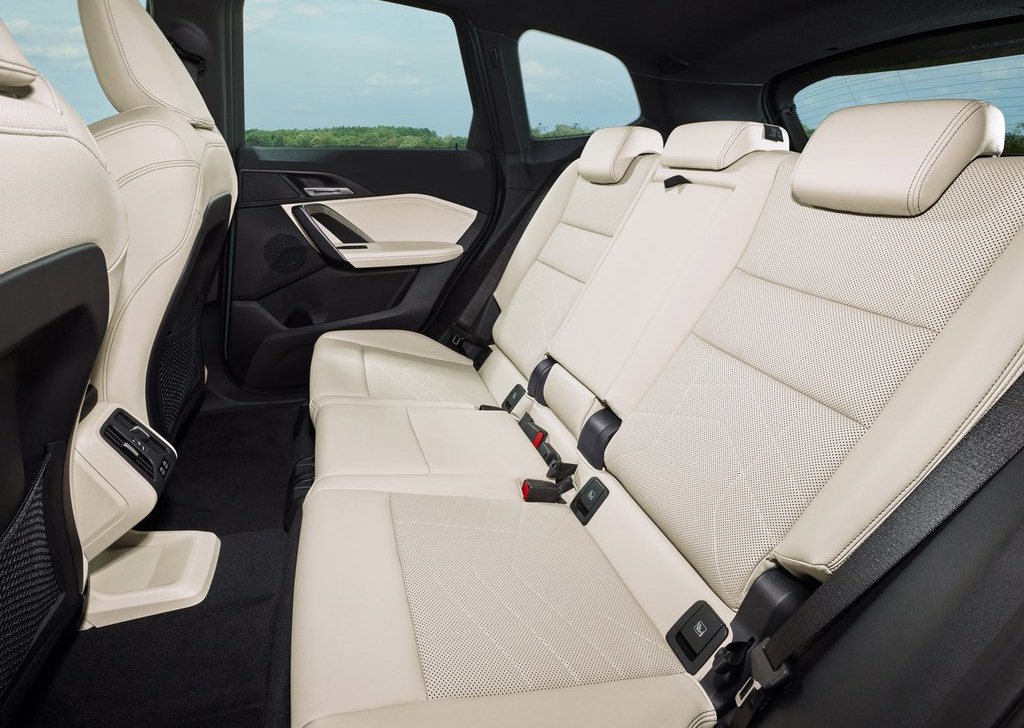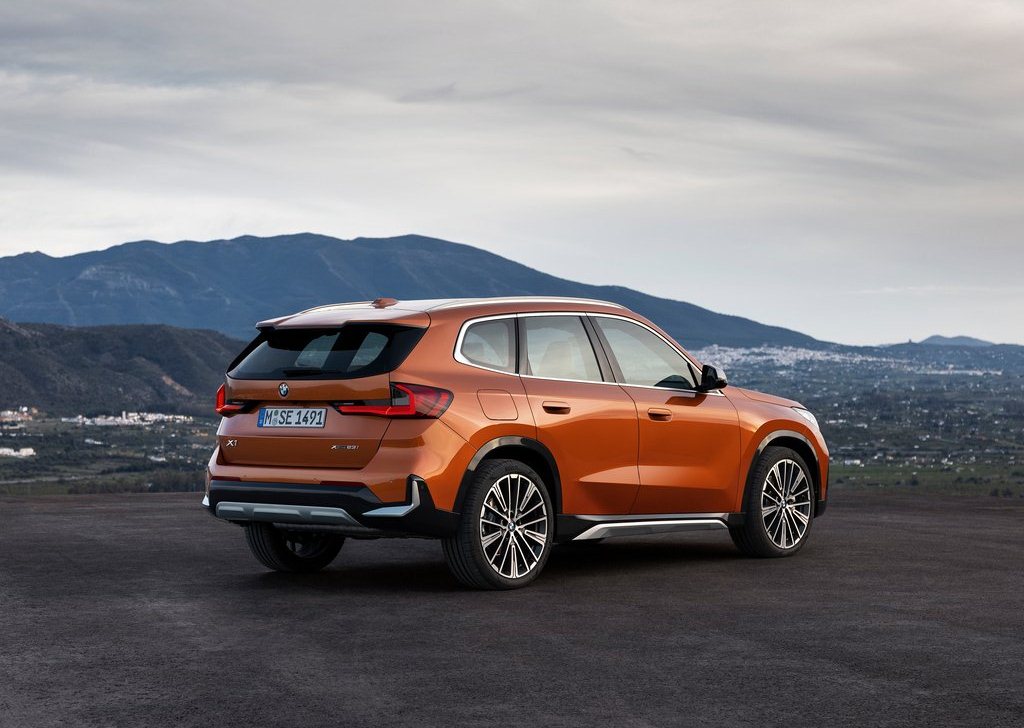Instantly accessible driving pleasure and modern versatility mark out the character of the new BMW X1. With its more prominent design, commitment to electrification and progressive connectivity, the X1 leads the successful vehicle concept of a Sports Activity Vehicle (SAV) for the premium compact segment into a future shaped by sustainability and digitalisation. Significantly expanded standard specification, increased spaciousness and a premium ambience for the interior, the new control/operation system with BMW Operating System 8 and the BMW Curved Display, and a large selection of systems for automated driving and parking underscore the standout status of the new BMW X1 against its rivals. When the original BMW X1 was launched in 2009, it opened up a new vehicle category in the premium segment. Since then, the compact SAV has served as an attractive entry model into the world of BMW X. With its robust character profile and functional versatility, the BMW X1 embodies an authentic experience of freedom and independence in day-to-day driving and on longer journeys. Its strong popularity is reflected in the total of around 1.9 million units sold so far in markets around the world.
Substantial boost for the accelerated ramp-up of electric mobility
In its third model generation, the BMW X1 also offers a gateway to BMW i-style electric mobility for a wide target audience. The BMW iX1 xDrive30 (electric power consumption, combined in the WLTP cycle: 18.4 - 17.3 kWh/100 km; CO2 emissions: 0 g/km) due to go on sale immediately after the launch of the new model generation is the BMW Group's first premium compact model based on a flexible vehicle architecture to feature an all-electric drive system. The company's offering accelerates the ramp-up of electric mobility, which is one of its strategic points of focus. The BMW Group is aiming to have more than two million fully electric vehicles on the road by the end of 2025. Indeed, by 2030 every other vehicle sold by the BMW Group worldwide should have an all-electric drive system. All new BMW X1 models will be built at BMW Group Plant Regensburg, which also hosted production of the outgoing model generation - plug-in hybrid variant included. Models with combustion engines, plug-in hybrid systems and all-electric drive will now roll off a single assembly line here. This ensures the plant will be able to respond flexibly to changes in customer demand as and when they occur. The high-voltage batteries for the BMW iX1 xDrive30 will likewise be produced at Regensburg. The high-voltage batteries fitted in the plug-in hybrid models and all other elements of fifth-generation BMW eDrive technology will be manufactured at BMW Group Plant Dingolfing, the company's centre of excellence for the production of e-drive components.
BMW Efficient Dynamics: Holistic concept for sustainability
Back in 2007, the BMW Group introduced a concept that remains unique in the automotive industry to this day. The Efficient Dynamics package of technology combined the unstinting reduction of fuel consumption and CO2 emissions with a commitment to increasing driving pleasure. Under BMW Efficient Dynamics, every aspect of vehicle development without exception is assessed by how it could help to optimise sustainability. As well as the powertrain, this applied primarily to energy management, aerodynamics and weight reduction through intelligent lightweight design. These efficiency measures add to the appeal of the model range in terms of cost effectiveness and driving pleasure, giving BMW models a particularly future-focused premium character which sets them apart clearly from their rivals.
Petrol engines with greater fuel efficiency and lower emissions
The BMW X1 sDrive18i and BMW X1 xDrive23i are powered by petrol engines with three and four cylinders from the BMW Group Efficient Dynamics engine family's new modular generation. The array of innovations that enhance their efficiency and emissions performance, in particular, include the Miller cycle (which shortens the opening time of the intake valves), redesigned intake ports and combustion chambers, and an ignition system featuring an active coil with integrated electronics. Mixture preparation is optimised using a new dual injection system. In addition to the existing high-pressure injection system, some of the fuel is now injected into the combustion chambers via a lowpressure system. At the same time, the effectiveness of the turbocharging system and intercooler has also been increased. The 2.0-litre four-cylinder unit and 48V mild hybrid technology in the new BMW X1 xDrive23i give it a maximum output of 160 kW/218 hp (developed by the combination of the combustion engine with up to 150 kW/204 hp at 5,000 - 6,500 rpm and the integrated electric motor with up to 14 kW/19 hp) and peak torque of 360 Nm/265 lb-ft (developed by the combination of the combustion engine with up to 320 Nm/236 lb-ft at 1,500 - 4,000 rpm and the integrated electric motor with up to 55 Nm/41 lb-ft). This results in a 0 to 100 km/h (62 mph) acceleration time of 7.1 seconds. This spirited power delivery does not come at the expense of efficiency, with combined fuel consumption of 7.2 - 6.5 litres per 100 kilometres (39.2 - 43.5 mpg imp) and CO2 emissions of 162 - 146 grams per kilometre in the WLTP cycle. The upgraded three-cylinder engine in the new BMW X1 sDrive18i, meanwhile, extracts maximum output of 100 kW/136 hp and maximum torque of 230 Nm/170 lb-ft from its 1.5-litre capacity. This enables the car to sprint from 0 to 100 km/h (62 mph) in 9.2 seconds. The combined fuel consumption and CO2 emissions figures as measured in the WLTP test cycle come in at 7.0 - 6.3 litres per 100 kilometres (40.4 - 44.9 mpg imp) and 158 - 143 grams per kilometre.
Diesel engines with further improvements to efficiency
The 2.0-litre four-cylinder diesel units fitted in the new BMW X1 xDrive23d and BMW X1 sDrive18d have also undergone an extensive upgrade, and now feature low-friction pistons made from tempered steel, a graphite coating for the piston skirts and an active oil separator with map-regulated electric drive. In an effort to further cut fuel consumption and emissions, improvements have also been made to the efficiency of the two-stage turbocharging and to the common-rail injection and exhaust gas recirculation systems. Combining these advances with 48V mild hybrid technology allows the new BMW X1 xDrive23d to deliver maximum output of 155 kW/211 hp (developed by the combination of the combustion engine with up to 145 kW/197 hp at 4,000 rpm and the integrated electric motor with up to 14 kW/19 hp) together with peak torque of 400 Nm/295 lb-ft (developed by the combination of the combustion engine with up to 400 Nm/295 lb-ft at 1,500 - 2,750 rpm and the integrated electric motor with up to 55 Nm/41 lb-ft). The sprint from 0 to 100 km/h (62 mph) takes 7.4 seconds. The car's superior efficiency is reflected in combined fuel consumption and CO2 figures of 5.4 - 4.8 litres per 100 kilometres (52.3 - 58.9 mpg imp) and 142 - 125 grams per kilometre in the WLTP cycle. Thanks to the new version of the 2.0-litre four-cylinder diesel engine developing maximum output of 110 kW/150 hp and peak torque of 360 Nm/265 lb-ft, the BMW X1 sDrive18d reaches 100 km/h (62 mph) from a standstill in 8.9 seconds. At the same time, it posts combined fuel consumption and CO2 emissions of 5.5 - 4.9 litres per 100 kilometres (51.4 - 57.7 mpg imp) and 145 - 129 grams per kilometre, as measured in the WLTP test cycle.









![2026 Kia K4 [EU]](https://blogger.googleusercontent.com/img/b/R29vZ2xl/AVvXsEjTKz7QS9prnkV8r0I5OlHe0G0UIri0ZvMe01a1MAqQtNWxXuzh1xQ3mHdkLgn7saZ59s65y43M_qvaGLyFLi4IBCPr_misRPzIiXgsLd_gWl5rAdY6iMxgEVdQ8iU_mZARNLxIDnzHFbFvACXEUn3NOQiyzCC3gNC9RA1e8RfNISfjBe7yZATQHP6B6olS/w680/2026%20Kia%20K4%20%5BEU%5D_01.jpg)
![2026 Audi Q5 e-hybrid [UK]](https://blogger.googleusercontent.com/img/b/R29vZ2xl/AVvXsEir1a6nfgXgtK2fLYDmw32_LgM7-BTCu-x6BWuvsz6Zob0dI7Dj87zV25C64wn6qNwehWPOHznrilqaN3bQcuByKu8-5-zzXGYpG3NMggCmTYeHOfVPXOV8SYGLk09Z-S2osgYXrO-wn1uql1-9ixgnTGxF7Q3-bDgKumui6w2oF8FLdREx4YjXAU2hFfOC/w680/2026%20Audi%20Q5%20e-hybrid%20%5BUK%5D_01.jpg)





![2026 Kia Sportage [EU] Review: A Refined European Crossover with Bold Style and Electrified Options](https://blogger.googleusercontent.com/img/b/R29vZ2xl/AVvXsEgqMRwJE1m90uCMgRSB6oc4bAzmAaKXJlNoCwavK5fXHaphLYY1sUVXdxUC94zuj95CdjDG2SqRnUBYMqta-dapTLIaHhzEdJAS821ldVMQOKfAZNpQlZ5fYTwKzKbKj8ad9QeKlaQPcNLRZ6zaGvuXhsg1kQ6zQCQqYtjmOM8q9u-a7Nl3WYjp773OLXJR/w680/2026%20Kia%20Sportage%20%5BEU%5D_01.jpg)





0 Comments